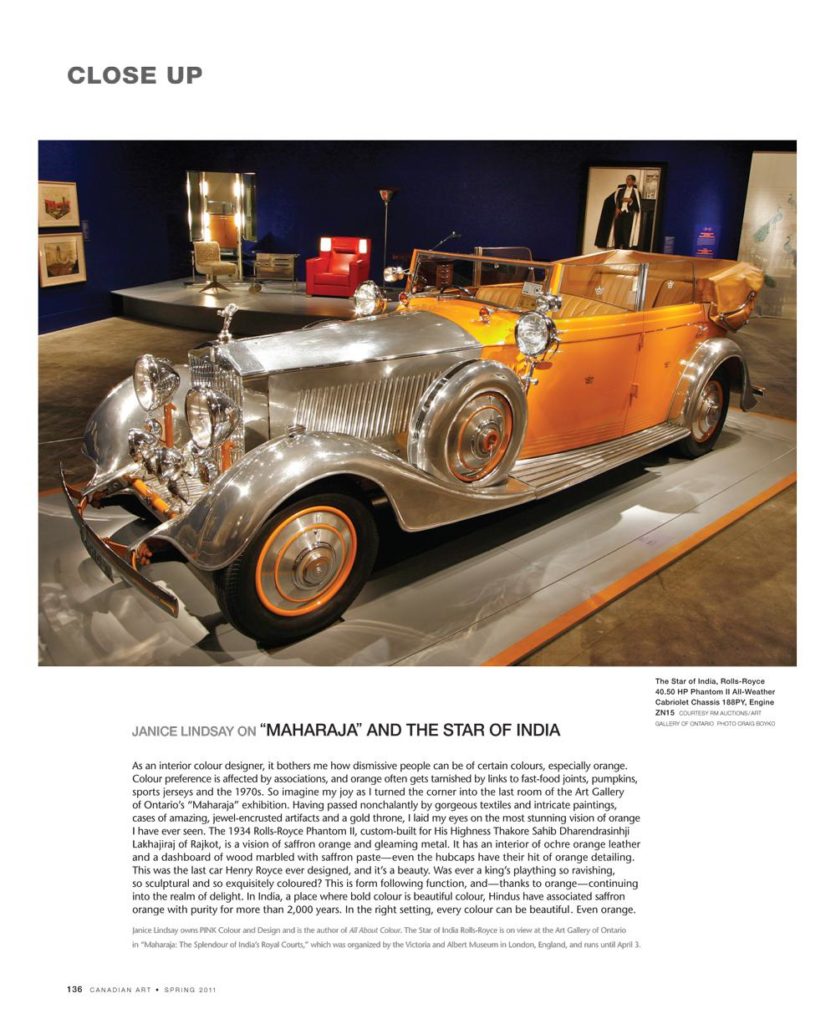As an interior colour designer, it bothers me how dismissive people can be of certain colours, especially orange. Colour preference is affected by associations, and orange often gets tarnished by links to fast-food joints, pumpkins, sports jerseys and the 1970s. So imagine my joy as I turned the corner into the last room of the Art Gallery of Ontario’s “Maharaja” exhibition. Having passed nonchalantly by gorgeous textiles and intricate paintings, cases of amazing, jewel-encrusted artifacts and a gold throne, I laid my eyes on the most stunning vision of orange I have ever seen. The 1934 Rolls-Royce Phantom II, custom-built for His Highness Thakore Sahib Dharendrasinhji Lakhajiraj of Rajkot, is a vision of saffron orange and gleaming metal. It has an interior of ochre orange leather and a dashboard of wood marbled with saffron paste—even the hubcaps have their hit of orange detailing. This was the last car Henry Royce ever designed, and it’s a beauty. Was ever a king’s plaything so ravishing, so sculptural and so exquisitely coloured? This is form following function, and—thanks to orange—continuing into the realm of delight. In India, a place where bold colour is beautiful colour, Hindus have associated saffron orange with purity for more than 2,000 years. In the right setting, every colour can be beautiful. Even orange.
This is an article from the Spring 2011 issue of Canadian Art. To read more from this issue, please visit its table of contents.

 Spread from the Spring 2011 issue of Canadian Art
Spread from the Spring 2011 issue of Canadian Art







